Ask our dispensing optician
Your request was successfully submitted!
Can a Warm Compress Help Your Eyes?

Reviewed by
Beck Jinette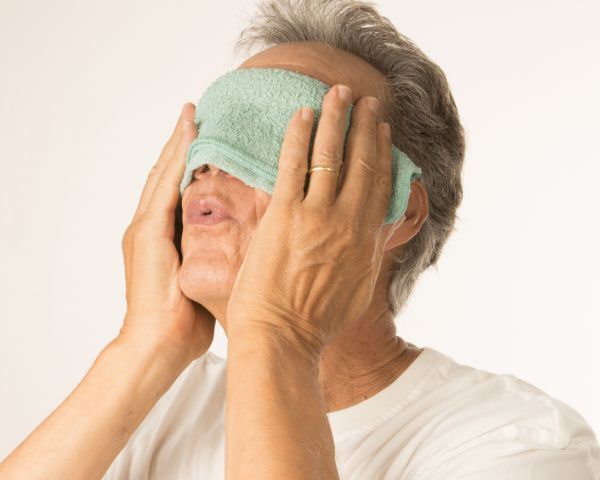

Suffering from dry or irritated eyes? A warm compress is the perfect remedy to provide you with fast relief.
There’s nothing worse than having dry, itchy or irritated eyes.
Luckily, one way to get easy and quick relief in the comfort of your home is a warm compress.
They’ve long been used as a home remedy because the compress provides moisture and heat to your eyes, relieving the symptoms of mild conditions like itchiness, irritation, swelling and dry eye, among others.
What can I use a warm compress for?
So, what is a warm compress? It can be moist or dry, typically a cloth or heat pad, that you place over your eyes to ease your discomfort.
There are various mild eye conditions that warm compresses may be used for, such as:
- Dry eye syndrome
- Conjunctivitis
- Blepharitis (swollen eyelid)
- Sties
- Meibomian gland dysfunction (MGD)
- Chalazia (eyelid cysts)


DID YOU KNOW?
Applying a warm compress to your eyes is great for relaxation! It can help relax your muscles leaving you feeling soothed and calm.
Types of compresses
There are two main types of warm compresses: dry and moist.
A dry compress is achieved using a heating pad, or a hot-water bottle. Whereas, a moist compress requires using a wet towel or washcloth in warm water.
Both types deliver heat, however moist compresses have been found to be more effective in relieving pain and providing faster relief than dry ones.
Nonetheless, if you need a convenient fix that requires zero cleanup, a dry compress can still provide some relief.
Benefits of a warm compress on your eyes
Now that you know what a warm compress is, here are some of the benefits that it can provide:
- Adds moisture: moisture can open up the oil glands to improve their function which helps your eyes with normal tear production.
- Prevent oils from clogging: when the oil glands aren’t working properly and become clogged, it can result in blepharitis, sties or cysts. The moist heat can clear the obstructed glands and normalise oil flow to the eyes.
- Relieves pain: a warm compress provides quick relief by stimulating healing in the area.
- Eye muscle spasms: the moist heat can help relax the muscles in your eye.
How to make a warm compress for your eyes
Making warm compresses at home is simple and requires few resources.
- Fill a clean bowl with warm clean water. This can be done using the warm water from the tap, or heating it in the microwave. The temperature should be between warm and comfortably hot.
- Soak a clean washcloth in the warm water until it’s fully soaked through.
- Remove the washcloth and wring out all of the excess water.
- Fold the washcloth in half or until it is a size that sits comfortable over your eyes.
- Leave the cloth on your eyes for a few minutes or until it gets cold.
- Repeat steps 2-5 for no longer than 10-15 minutes for optimal results. Excessive time can dry out your skin.
Note if you have any infection or discharge from the eye, please change the water in between to avoid further spread of infection.
Remember: the water should never be too hot as it can cause injury to your eye area!
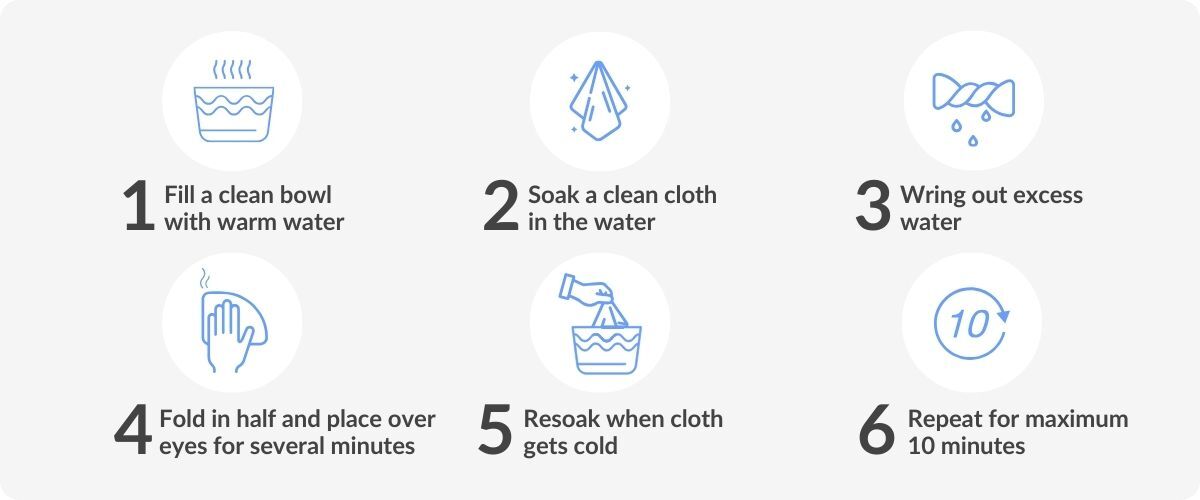
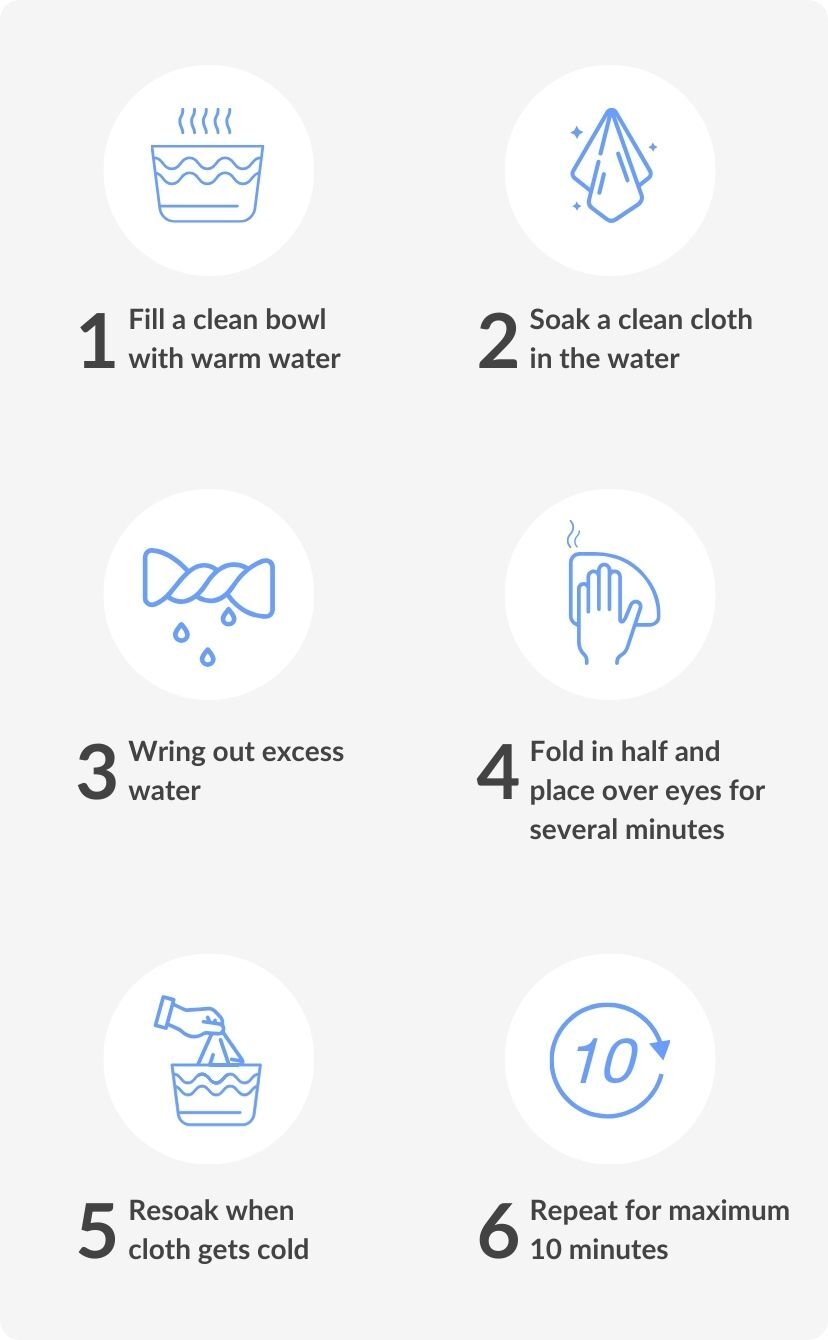
Are warm compresses safe for your eyes?
Warm compresses are safe, as long as you are careful.
The main issue that can arise is the washcloth being too hot which can cause injury.
The temperature of the water should never be uncomfortable or inflict pain.
Furthermore, warm compresses are not ideal to use on a fresh injury, especially near open wounds.
A cold compress may be more beneficial in this case, to relieve pain and reduce inflammation.
Lastly, frequent use can dry out the skin around your eyes. Though it is not dangerous, it could leave your skin feeling uncomfortable.
Warm compress to treat dry eye
One of the main conditions a warm compress is used to relieve dry eye syndrome.
Did you know that about 40% of adults suffer from varying degrees of dry eye conditions?
Dry eye is the result of the inability to produce high quality or sufficient amounts of tears to lubricate the eyes.
There are many causes of dry eye syndrome such as age, allergies, lack of sleep, contact lenses, air pollutants and medications.
Dry eye symptoms
There are several dry eye symptoms you may experience, including:
- Excessive tearing
- Blurry vision
- Redness
- Gritty sensation
- Stinging or burning
- Light sensitivity
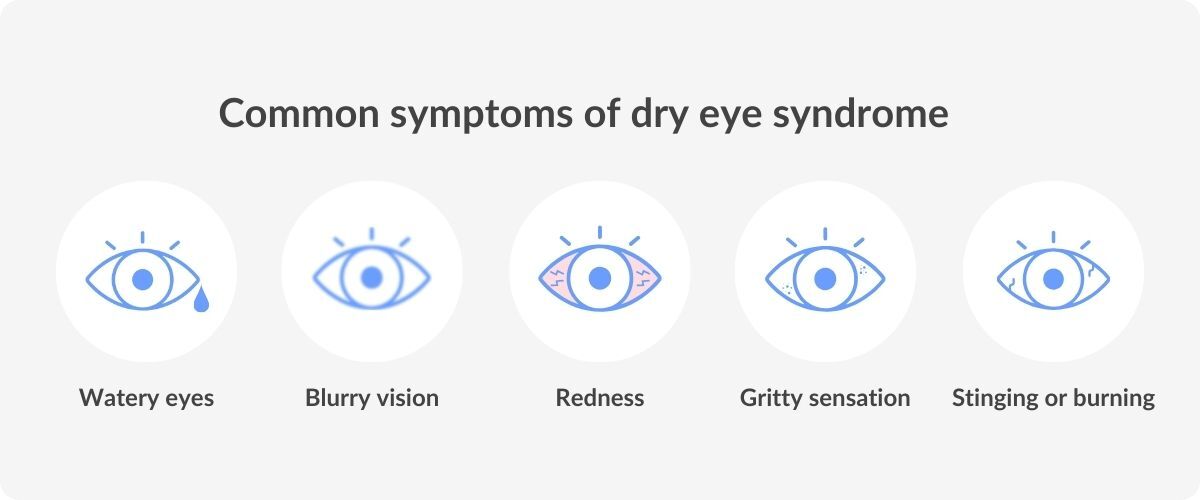
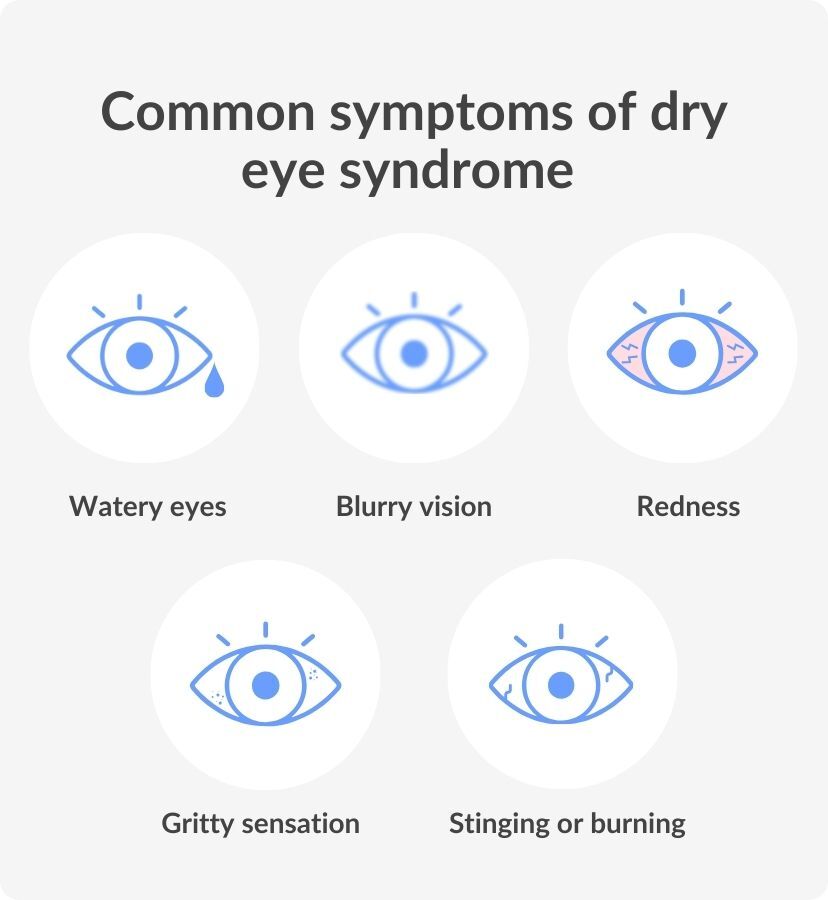
A compress may relieve these dry eye symptoms as it will add moisture and heat to help tear production and clear the meibomian glands.
The increased blood flow can also alleviate pain and swelling.
This is one remedy among many, others may involve making dietary or environmental changes or prescription eye drops.
Remember, it’s important to consult an eye expert immediately if remedies do not work, or worsen your symptoms.
When to seek professional help
Using an eye compress can provide quick relief at home, though it may not be what’s best for you if your symptoms are more severe.
Your eye doctor will be able to give you the appropriate medical advice for your specific situation.
If you notice any of the following, contact your eye doctor:
- Symptoms worsening
- Persistent burning or stinging
- Blurry vision, even with your glasses
- Severe eye dryness that affects your daily life
- Headaches or migraines
At SmartBuyGlasses Optical Centre, you can stay informed on a wide range of eyecare topics with our educational articles, and look after your eyes as best as possible.
References
Bilkhu, PS, Naroo, SA & Wolffsohn, JS (2014), Effect of a Commercially Available Warm Compress on Eyelid Temperature and Tear Film in Healthy Eyes, vol. 91, no.2, Optometry and Vision Science. https://journals.lww.com/optvissci/pages/articleviewer.aspx?year=2014&issue=02000&article=00008&type=Fulltext
Rouen, PA. PhD, White, ML 2018, Dry Eye Disease: Prevalence, Assessment, and Management, vol. 36, no.2, Home Healthcare Now. https://journals.lww.com/homehealthcarenurseonline/Fulltext/2018/03000/Dry_Eye_Disease__Prevalence,_Assessment,_and.3.aspx
Related articles







































